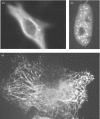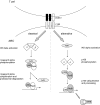Autoimmune polyendocrinopathy candidiasis ectodermal dystrophy (APECED): a model disease to study molecular aspects of endocrine autoimmunity
- PMID: 15008965
- PMCID: PMC1808970
- DOI: 10.1111/j.1365-2249.2004.02384.x
Autoimmune polyendocrinopathy candidiasis ectodermal dystrophy (APECED): a model disease to study molecular aspects of endocrine autoimmunity
Figures




References
-
- Neufeld M, Maclaren NK, Blizzard RM. Two types of autoimmune Addison's disease associated with differen polyglandular autoimmune (PGA) syndromes. Medicine (Baltimore) 1981;60:355–62. - PubMed
-
- Ahonen P, Myllärniemi S, Sipila I, et al. Clinical variation of autoimmune polyendocrinopathy-candidiasis-ectodermal dystrophy (APECED) in a series of 68 patients. N Engl J Med. 1990;322:1829–36. - PubMed
-
- Perheentupa JAPS-I APECED. the clinical disease and therapy. Endocrinol Metabol Clin N Am. 2002;31:295–320. - PubMed
Publication types
MeSH terms
Substances
Grants and funding
LinkOut - more resources
Full Text Sources

